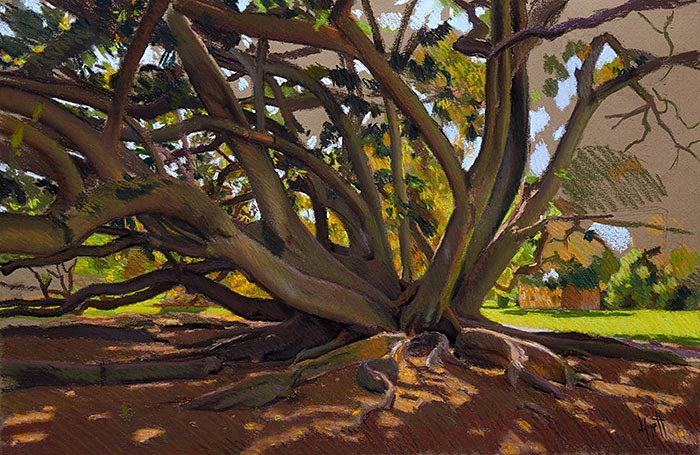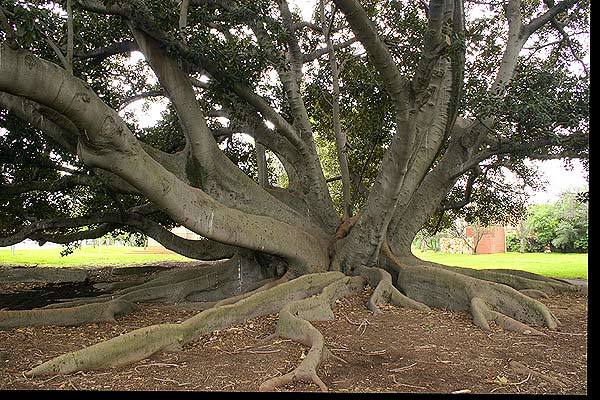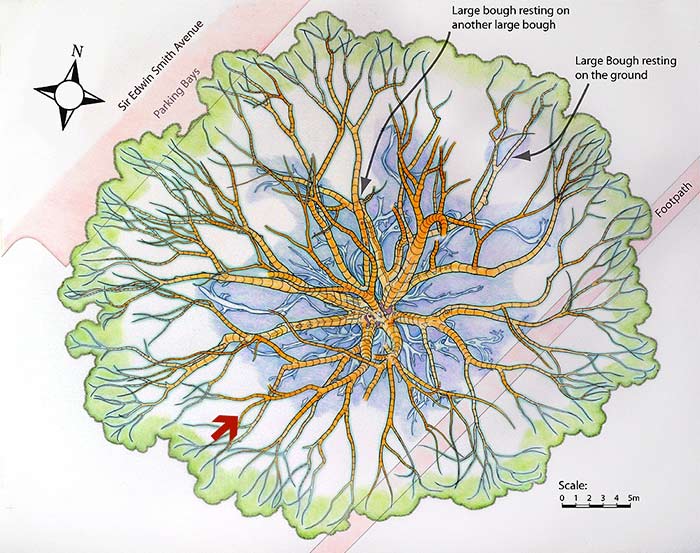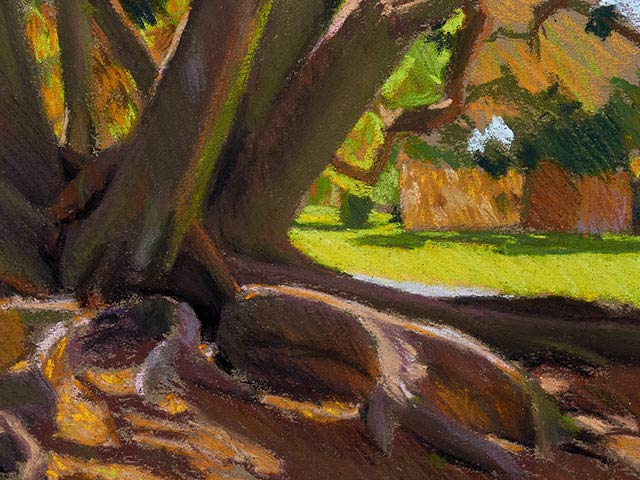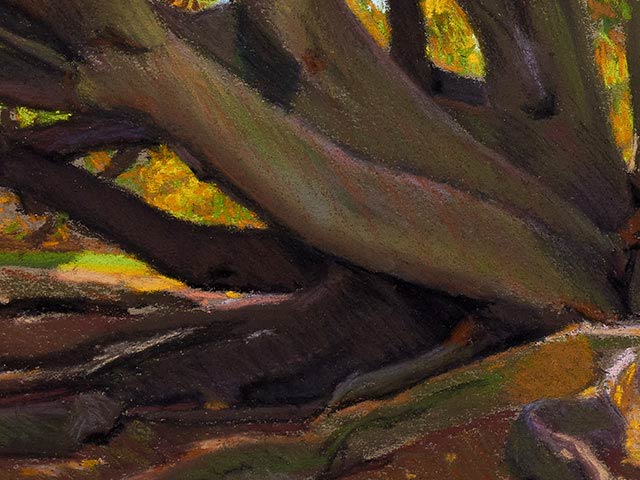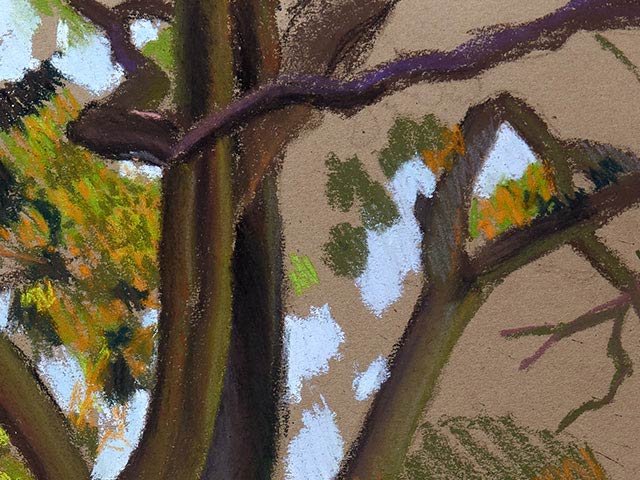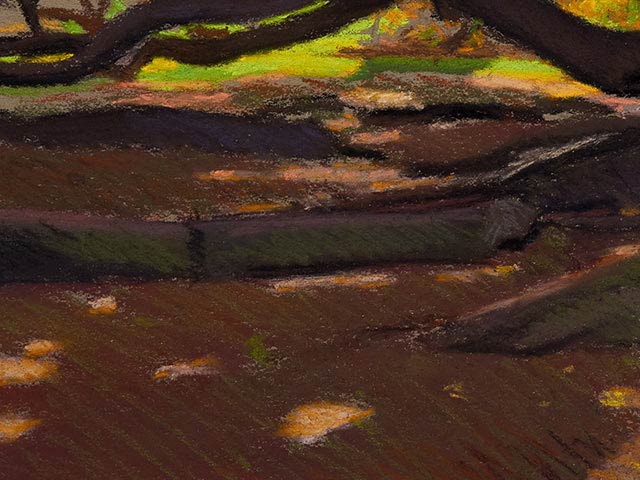53 cm (w) x 34.5 cm (h), unfixed pastels on coloured-ground paper.
Date produced: March 2017
The particular tree here was the subject of a two-year art project, my Microcosm project. This pastel was produced entirely on-site, directly from the subject over about five one-hour sessions held at the same time of the day (but over 5 different days where the lighting conditions were very similar). I worked quickly, directly from the subject, to record the colours as accurately as possible. I purposely chose a view with a wide dynamic range of tones. I wanted to capture an accurate sense of the colours seen within the dark shaded areas, and the light sunlit areas. I also wanted to capture the characteristic warm orangey greens seen through sun-backed foliage. The concept is very simple - a single view, recording one moment in time, recording accurate colours and tones to those experienced - similar to the concept of many ’French Impressionism’ paintings. I ultimately wanted to try to produce an oil painting that was larger than this pastel, of the same view, but didn’t need to be framed behind glass. I need to frame my pastels behind glass, because they are all unfixed (fixing is done with a layer of sprayed lacquer, but this does change the refractive index of each pigment [it changes all of the colours] and the transparency of pastel layers), and are therefore extremely fragile. My pastels have mainly many tiny granules of colour just sitting on paper. Glass tends to include distracting reflections, and makes the darker colours more difficult to see. By producing a larger copy with oils, I hoped to create a large pastel-like image that didn’t require a protective layer of glass, and that had an even wider dynamic range of observed subtle tones and colours than pastels can reproduce. The big problem was being able to get the oil painting to the subject (and home again safely) enough times to capture the subtle colours one can observe from the real subject in real light. I prefer to work entirely directly from the subject, but knew from previous attempts at producing paintings on-site, that I would not be able to get this oil painting out on-site enough (if at all). I live quite a distance from this tree, and don’t have a car to transport it. Even if I did, I know that I wouldn’t get enough time at the tree with the same lighting conditions to produce this painting. The light is only ‘good’ for about an hour each sunny day, and even this changes in the span of just a week or two (as the earth orbits around the sun each year). Other things change over the course of a couple of weeks, such as the length of the grass, the dryness of the ground, etc. I decided to try a different method of accessing the subtle observed colours in the scene, using a combination of: 1) A pastel produced on-site (reproduced above) directly from the scene and produced during the same hour of the day over several days with the same lighting conditions, and 2) A high-quality digital photograph taken of the scene from the same observation point at 11:32 am on 9th March 2017. The photograph was taken during the first pastel session I held at the tree. The photograph was taken as a ‘raw’ format digital photograph, which means that it could be ’processed’ using specialised software in a computer to have many of its colours and tones modified or ‘tweaked’. Naturally, I used the on-site pastel here as my reference for processing the photograph that I would use as one of my guides. The photograph had the advantage of capturing a moment in time, so the unique arrangement of branches, leaves and light through the scene would be always available from this photograph.
|
